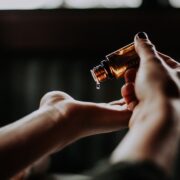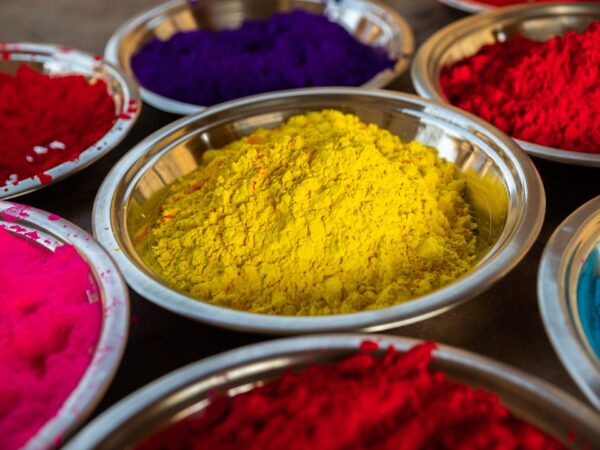
Whitening Creams for Oily Skin: A Guide
Whitening creams have become increasingly popular in recent years, as people strive for brighter, more even-toned skin. However, when it comes to oily skin, finding the right whitening cream can be a challenge. Oily skin is characterized by excess sebum production, which can make the skin appear shiny and lead to clogged pores and acne breakouts. Understanding how whitening creams work and which ingredients to look for can help individuals with oily skin achieve their desired results without exacerbating their skin concerns.
Key Takeaways
- Whitening creams for oily skin work by reducing the production of melanin, which causes dark spots and uneven skin tone.
- Look for ingredients like niacinamide, vitamin C, and alpha hydroxy acids in whitening creams for oily skin.
- Sun protection is crucial when using whitening creams, as they can make skin more sensitive to UV damage.
- Choose a whitening cream that is specifically formulated for your oily skin type to avoid clogged pores and breakouts.
- Benefits of using whitening creams for oily skin include brighter, more even-toned skin and reduced appearance of dark spots.
Understanding the Science of Whitening Creams for Oily Skin
Whitening creams work by inhibiting the production of melanin, the pigment responsible for skin color. Melanin is produced by melanocytes, specialized cells located in the basal layer of the epidermis. The amount and distribution of melanin in the skin determine its color. Whitening creams contain ingredients that interfere with the production of melanin, leading to a lighter complexion.
Oily skin can affect the effectiveness of whitening creams due to several factors. First, excess sebum production can create a barrier on the surface of the skin, preventing the penetration of active ingredients in the whitening cream. Additionally, oily skin is more prone to clogged pores and acne breakouts, which can lead to post-inflammatory hyperpigmentation. This means that even if a whitening cream is effective in lightening the overall complexion, it may not be able to address specific areas of hyperpigmentation caused by acne.
Ingredients to Look for in Whitening Creams for Oily Skin
When choosing a whitening cream for oily skin, it is important to look for specific ingredients that can address both oiliness and pigmentation concerns. Some common ingredients found in whitening creams include:
1. Vitamin C: This powerful antioxidant not only helps to brighten the skin but also regulates sebum production and reduces inflammation.
2. Niacinamide: This ingredient helps to regulate oil production, reduce pore size, and improve the overall texture of the skin. It also has brightening properties and can help to fade dark spots and hyperpigmentation.
3. Alpha hydroxy acids (AHAs): AHAs such as glycolic acid and lactic acid can help to exfoliate the skin, remove dead skin cells, and promote cell turnover. This can lead to a brighter complexion and help to fade dark spots.
It is important to avoid certain ingredients in whitening creams for oily skin, as they can exacerbate oiliness and clog pores. These include:
1. Mineral oil: This ingredient is occlusive and can trap sebum and bacteria in the pores, leading to breakouts.
2. Heavy oils: Oils such as coconut oil and avocado oil can be comedogenic and clog pores, leading to acne breakouts.
3. Fragrance: Fragrances can irritate the skin and trigger excess oil production.
Natural alternatives for whitening include ingredients such as licorice extract, kojic acid, and arbutin, which have been shown to have skin-lightening properties.
The Importance of Sun Protection in Whitening Creams for Oily Skin
| Metrics | Description |
|---|---|
| SPF | Sun Protection Factor measures the level of protection against UVB rays. |
| PA | Protection Grade of UVA measures the level of protection against UVA rays. |
| Oil Control | Ability of the cream to control oil production on the skin. |
| Whitening | Ability of the cream to lighten the skin tone and reduce dark spots. |
| Non-Comedogenic | Ability of the cream to not clog pores and cause acne. |
Sun exposure is one of the main factors that contribute to skin pigmentation. When the skin is exposed to UV radiation, it triggers the production of melanin as a protective mechanism. This can lead to an increase in pigmentation and the formation of dark spots.
Whitening creams that contain SPF (sun protection factor) can help to prevent further pigmentation by blocking UV radiation from reaching the skin. It is important to choose a whitening cream with a broad-spectrum SPF of at least 30 to ensure adequate protection against both UVA and UVB rays.
When using a whitening cream with SPF, it is important to apply it generously and reapply every two hours, especially if spending time outdoors. It is also important to use additional sun protection measures such as wearing a wide-brimmed hat and seeking shade during peak sun hours.
How to Choose the Right Whitening Cream for Your Oily Skin Type
Different individuals with oily skin may have different concerns and needs when it comes to whitening creams. It is important to consider factors such as skin type, specific skin concerns, and personal preferences when choosing a whitening cream.
There are different types of oily skin, including:
1. Oily and acne-prone: This type of oily skin is characterized by frequent breakouts and clogged pores. Individuals with this skin type may benefit from a whitening cream that also targets acne and contains ingredients such as salicylic acid or tea tree oil.
2. Oily and sensitive: This type of oily skin is prone to irritation and redness. Individuals with this skin type should look for a whitening cream that is gentle and free from potential irritants such as fragrances or essential oils.
3. Oily and aging: This type of oily skin may also have concerns related to aging, such as fine lines and wrinkles. Individuals with this skin type may benefit from a whitening cream that also contains anti-aging ingredients such as retinol or peptides.
Recommended products for different skin types include:
1. Oily and acne-prone: La Roche-Posay Effaclar Duo Dual Action Acne Treatment, which contains niacinamide and salicylic acid to target both oiliness and acne.
2. Oily and sensitive: Cetaphil Dermacontrol Oil Control Moisturizer SPF 30, which is lightweight, non-comedogenic, and free from potential irritants.
3. Oily and aging: Paula’s Choice Resist Super-Light Wrinkle Defense SPF 30, which contains antioxidants and anti-aging ingredients to address both oiliness and aging concerns.
The Benefits of Using Whitening Creams for Oily Skin
Using whitening creams for oily skin can offer several benefits, including:
1. Achieving brighter, even-toned skin: Whitening creams can help to lighten the overall complexion and reduce the appearance of dark spots and hyperpigmentation.
2. Reducing the appearance of dark spots and hyperpigmentation: Whitening creams can target specific areas of hyperpigmentation caused by acne or sun damage, leading to a more even skin tone.
3. Boosting confidence and self-esteem: Having brighter, more even-toned skin can boost confidence and improve self-esteem, leading to a more positive body image.
The Risks and Side Effects of Using Whitening Creams for Oily Skin
While whitening creams can be effective in achieving brighter, more even-toned skin, they also come with potential risks and side effects. These include:
1. Skin irritation: Some individuals may experience skin irritation or allergic reactions to certain ingredients in whitening creams. It is important to patch test new products before applying them to the entire face.
2. Increased sensitivity to the sun: Some whitening creams contain ingredients that can increase the skin’s sensitivity to the sun, making it more prone to sunburn and further pigmentation. It is important to use additional sun protection measures when using these products.
3. Skin thinning: Some whitening creams contain ingredients such as steroids or hydroquinone, which can thin the skin over time with prolonged use. It is important to follow the recommended usage instructions and consult a dermatologist if experiencing any adverse effects.
To minimize the risks associated with using whitening creams, it is important to choose products that are suitable for oily skin, patch test new products before use, and follow the recommended usage instructions.
How to Incorporate Whitening Creams into Your Skincare Routine for Oily Skin
To incorporate whitening creams into your skincare routine for oily skin, follow these steps:
1. Cleanse: Start by cleansing your face with a gentle cleanser to remove any dirt, oil, and impurities.
2. Tone: Use a toner to balance the pH of your skin and prepare it for the next steps.
3. Apply whitening cream: Take a small amount of whitening cream and apply it evenly to your face, focusing on areas of hyperpigmentation or dark spots.
4. Moisturize: Follow up with a lightweight moisturizer to hydrate the skin without adding excess oil.
5. Apply sunscreen: Finish off your skincare routine with a broad-spectrum sunscreen with at least SPF 30 to protect your skin from further pigmentation caused by sun exposure.
It is recommended to use whitening creams in the evening, as some ingredients may increase the skin’s sensitivity to the sun. If using a whitening cream with SPF during the day, reapply sunscreen every two hours if spending time outdoors.
Tips for Maximizing the Effectiveness of Whitening Creams for Oily Skin
To maximize the effectiveness of whitening creams for oily skin, consider making the following lifestyle changes and adopting skincare habits:
1. Maintain a healthy diet: A diet rich in antioxidants, vitamins, and minerals can support skin health and promote a brighter complexion. Include plenty of fruits, vegetables, whole grains, and lean proteins in your diet.
2. Stay hydrated: Drinking an adequate amount of water can help to flush out toxins from the body and keep the skin hydrated and plump.
3. Avoid excessive sun exposure: Limit your time in the sun, especially during peak hours when UV radiation is strongest. Wear protective clothing and seek shade when necessary.
4. Avoid smoking and excessive alcohol consumption: Smoking and excessive alcohol consumption can contribute to skin damage and premature aging. Quitting smoking and moderating alcohol intake can improve the overall health and appearance of the skin.
5. Follow a consistent skincare routine: Consistency is key when it comes to skincare. Stick to a regular routine that includes cleansing, toning, moisturizing, and protecting the skin from the sun.
Understanding the Role of Diet and Lifestyle in Achieving Brighter, Even-Toned Skin
In addition to using whitening creams, diet and lifestyle factors play a crucial role in achieving brighter, even-toned skin. The impact of diet on skin health cannot be overstated. A diet rich in fruits, vegetables, whole grains, and lean proteins provides the necessary nutrients for healthy skin. Antioxidants found in fruits and vegetables help to protect the skin from free radicals and promote a brighter complexion.
Lifestyle factors such as stress management, exercise, and adequate sleep also contribute to skin health. Stress can trigger hormonal imbalances that can lead to increased oil production and breakouts. Regular exercise improves blood circulation, which can promote a healthy complexion. Adequate sleep allows the skin to repair and regenerate overnight.
Tips for a healthy lifestyle for brighter, even-toned skin include:
1. Eat a balanced diet: Include plenty of fruits, vegetables, whole grains, and lean proteins in your diet.
2. Manage stress: Practice stress management techniques such as meditation, deep breathing exercises, or engaging in hobbies that help you relax.
3. Exercise regularly: Aim for at least 30 minutes of moderate-intensity exercise most days of the week.
4. Get enough sleep: Aim for 7-9 hours of quality sleep each night.
5. Avoid smoking and excessive alcohol consumption: Smoking and excessive alcohol consumption can contribute to skin damage and premature aging.
The Future of Whitening Creams for Oily Skin: Trends and Innovations
The skincare industry is constantly evolving, and new trends and innovations are emerging in the field of whitening creams for oily skin. Some of the trends and innovations to look out for include:
1. Clean beauty: There is a growing demand for clean beauty products that are free from potentially harmful ingredients. Whitening creams that are formulated with natural and organic ingredients are becoming increasingly popular.
2. Multi-functional products: Consumers are looking for products that offer multiple benefits in one. Whitening creams that also target other skin concerns such as acne, aging, or hydration are gaining popularity.
3. Advanced technology: Innovations in skincare technology are leading to the development of more effective and targeted whitening creams. Ingredients such as peptides, stem cells, and growth factors are being incorporated into whitening formulations to enhance their efficacy.
4. Customization: Personalized skincare is becoming more prevalent, with brands offering customized whitening creams tailored to individual skin concerns and needs.
Understanding whitening creams for oily skin is essential for individuals who want to achieve brighter, more even-toned skin without exacerbating their oiliness or causing other skin concerns. By understanding how whitening creams work, which ingredients to look for, and the importance of sun protection, individuals can make informed choices when selecting a whitening cream for their oily skin type. Incorporating whitening creams into a comprehensive skincare routine, adopting healthy lifestyle habits, and following a balanced diet can further enhance the effectiveness of these products. With the right knowledge and approach, individuals with oily skin can achieve their desired results and boost their confidence and self-esteem.
FAQs
What is a whitening cream for oily skin?
A whitening cream for oily skin is a skincare product that is designed to reduce the appearance of dark spots, hyperpigmentation, and uneven skin tone on oily skin. It contains ingredients that help to regulate oil production and brighten the skin.
How does a whitening cream for oily skin work?
A whitening cream for oily skin works by reducing the production of melanin, which is responsible for dark spots and hyperpigmentation. It contains ingredients such as kojic acid, vitamin C, and niacinamide that help to brighten the skin and even out the skin tone.
Is a whitening cream for oily skin safe to use?
Yes, a whitening cream for oily skin is safe to use as long as it is used according to the instructions on the label. It is important to do a patch test before using the product to check for any allergic reactions.
Can a whitening cream for oily skin be used on sensitive skin?
It depends on the ingredients in the product. Some whitening creams for oily skin may contain ingredients that can irritate sensitive skin. It is important to check the label and do a patch test before using the product.
How long does it take to see results from using a whitening cream for oily skin?
It can take anywhere from a few weeks to a few months to see results from using a whitening cream for oily skin. Consistent use of the product is important for best results.
Can a whitening cream for oily skin be used on other skin types?
A whitening cream for oily skin is specifically designed for oily skin types. It may not be suitable for other skin types such as dry or sensitive skin. It is important to choose a product that is suitable for your skin type.


















